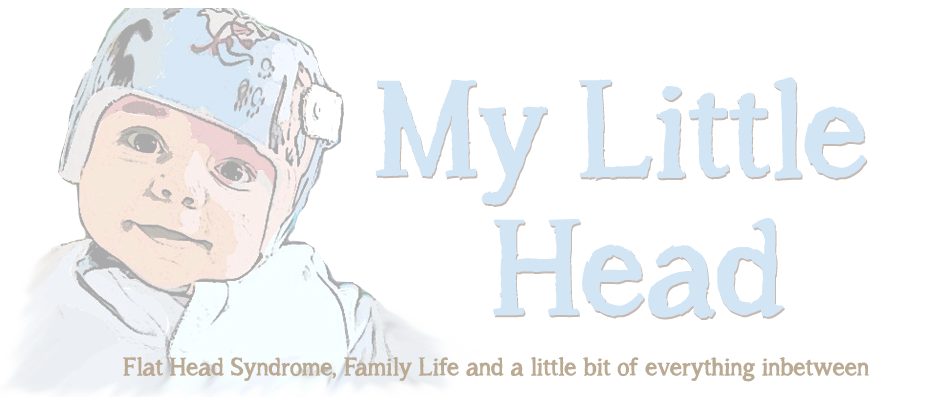Flat Head Syndrome (Plagiocephaly & Brachycephaly) is still a term that is relatively unheard of amongst parents, which is surprising considering just over 46% of infants between 7 -12 weeks show symptoms (Mawji, 2012). That's almost 1 in 2 or to put it into context, if you have more than one child, one of those children may very well develop symptoms of Flat Head Syndrome, Shocking when it's put like that and infuriating that parents are still not given any information relating to the condition prior to or soon after birth.
I will often to be chatting to people about my blog and I am still stunned to hear the response 'oh I have never heard of that!' and I think how can that be? It basically boils down to lack of advice and guidance from our health care professionals, but can we blame them? They follow guidance from above which currently states Flat Head Syndrome as merely a cosmetic issue, that will right itself by the infants 1st birthday and therefore the NHS do not fund corrective treatment.
Where does this advise come from? There has been so little research on the condition in the UK, that as a graduate of a scientific discipline, I find it startling that this advice can be dished out, with very little evidence to back it up. You only have to google 'Flat Head Syndrome' to find many parents with infants coming close to that year mark, that still have noticeable flatness and are desperate to get some help.
So I was excited when I came across an a study carried out in the Netherlands recently and published by the BMJ on plagiocephaly treatment and the effectiveness of corrective helmets, and compared a group of infants with moderate head deformities in treated and non treated groups. I read it straight away and soon my excitement turned to disappointment not only did the report conclude there being little difference between results of the two groups, I was sure the report had major flaws and would put corrective helmet treatment in a negative light, when it is actually an extremely safe and highly effective form of treatment. Articles like this can really influence parents and I fear some may end up delaying treatment due to this conclusion. So I did a bit of digging to see if others thought the same.
Technology in motion, Finnys Helmet Provider had already responded to the article here and concluded that the problems with the report were:
- unsound selection of protocols
- Flawed Treatment regimes
- High drop out rate of the treated Group
- selective reporting of data
- combining of data regarding different head shapes
- averaging the data, that mask individual achievements
 | |||
| Ill fitting helmet in Netherlands Report |
 |
| Snug Fitting Tim Band |
It was great to know that it wasn't just me that had worries about this study and I would highly recommend reading their response. I would like to say that I don't disagree with this study because it doesn't reflect the result I would like to see, rather it worries me that the flaws in the study are portraying the treatment in the incorrect light. Studies like his one are in urgent need and should be welcomed with open arms, however they should not contain flaws and biases - this is not good scientific practise and can jeopardise the treatment of any future infants due to flawed unsupervised methods. In order for this treatment to be effective and for the study to be scientifically sound the helmet must fit correctly and be worn for 23 hours a day. The groups were not monitored to ensure this happened and helmets were removed due to the babies being uncomfortable. Now when you look at the image above taken from the study, it is obvious the helmets did not fit correctly and of course were uncomfortable - How can this give correct results?
 |
| Finnys Improvement after only 2 weeks |
Ddisclaimer: This is not a sponsored post, all views regarding TiM are based on my own personal experience.
Related Post:
- What is Plagicephaly?
- How to prevent Plagiocephaly
- Finny's Plagiocephaly Journey
- 10 flat head syndrome facts

.JPG)
No comments:
Post a Comment